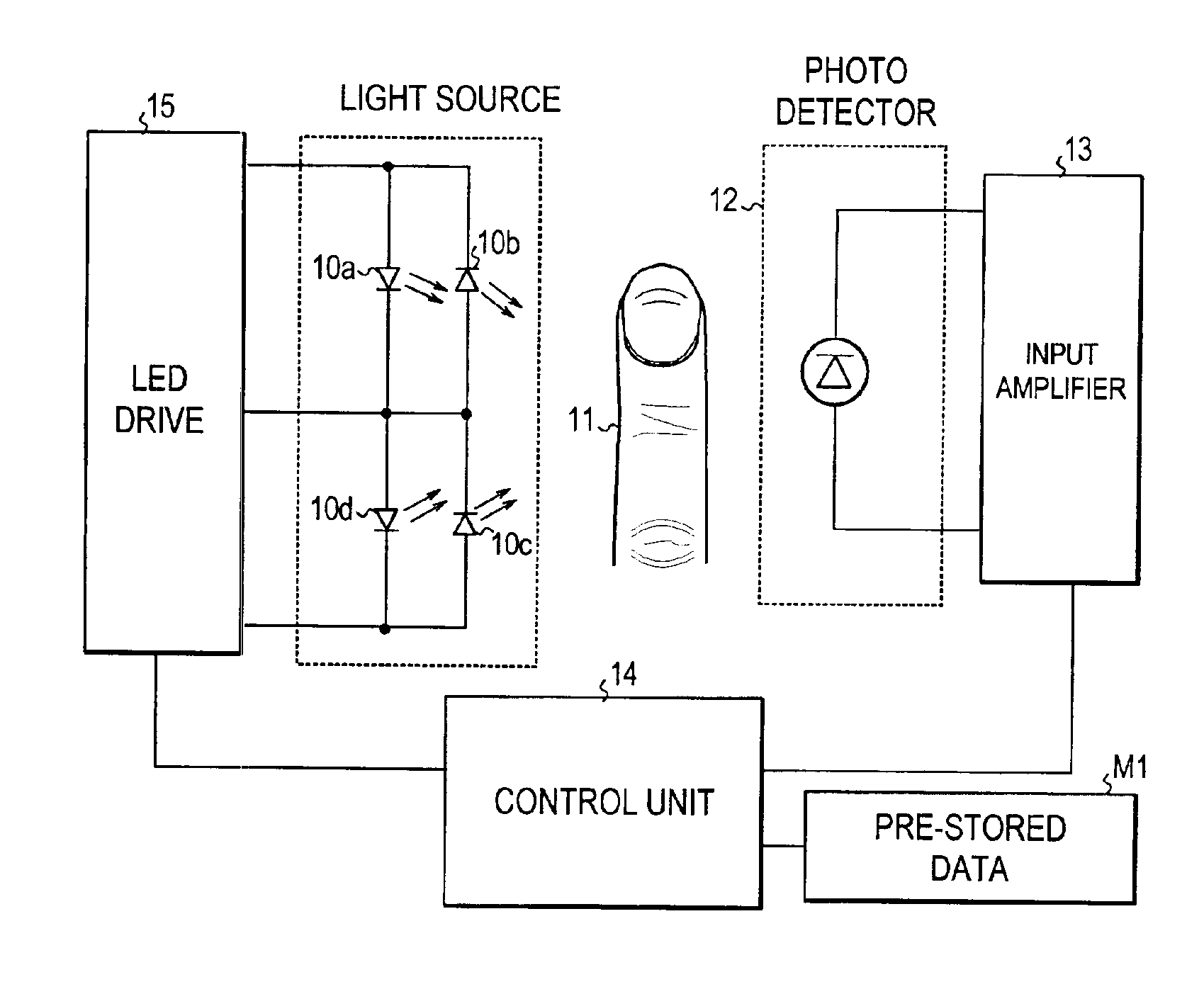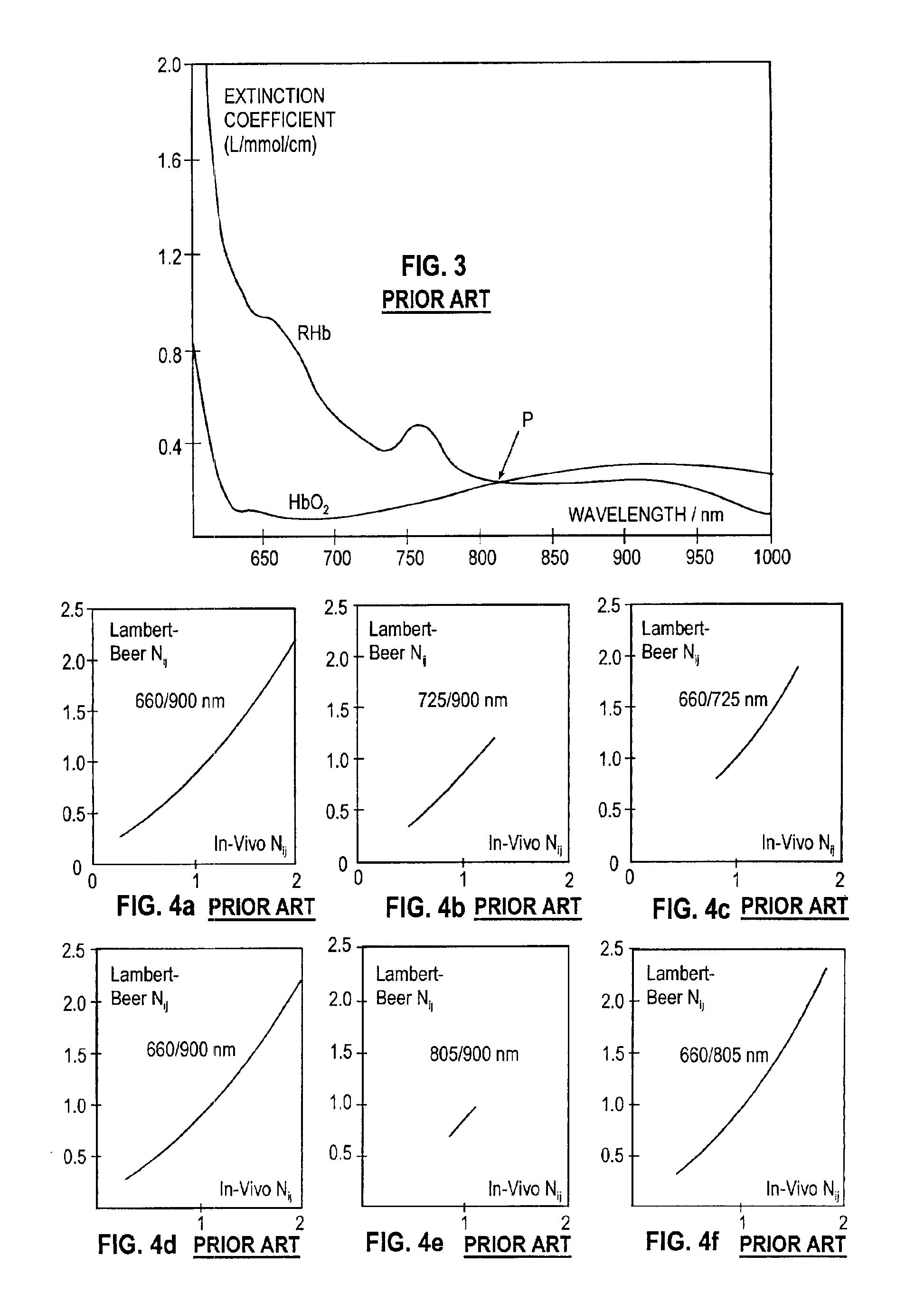Compensation of human variability in pulse oximetry
a pulse oximeter and human variability technology, applied in the field of pulse oximeters, can solve the problems of short-lived effect of dyes, large deviation in pulse oximeter readings, and erroneous data of pulse oximeters
- Summary
- Abstract
- Description
- Claims
- Application Information
AI Technical Summary
Problems solved by technology
Method used
Image
Examples
Embodiment Construction
[0058]Below, the solution according to the invention is discussed with reference to a pulse oximeter utilizing the above-mentioned transformations and four different wavelengths. As mentioned above, U.S. Pat. No. 6,104,938 discloses a pulse oximeter utilizing the transformations.
[0059]FIG. 1 is a block diagram of a pulse oximeter utilizing four different wavelengths. Light from four different LEDs 10a, 10b, 10c, and 10d, each operating at a respective wavelength, passes into patient tissue, such as a finger 11. The light propagated through or reflected from the tissue is received by a photodetector 12, which converts the optical signal received into an electrical signal and feeds it to an input amplifier 13. The amplified signal is then supplied to a control unit 14, which carries out calculation of the amount of the Hb-derivatives in the blood. The control unit further controls the LED drive 15 to alternately activate the LEDs. As mentioned above, each LED is typically illuminated ...
PUM
 Login to View More
Login to View More Abstract
Description
Claims
Application Information
 Login to View More
Login to View More - R&D
- Intellectual Property
- Life Sciences
- Materials
- Tech Scout
- Unparalleled Data Quality
- Higher Quality Content
- 60% Fewer Hallucinations
Browse by: Latest US Patents, China's latest patents, Technical Efficacy Thesaurus, Application Domain, Technology Topic, Popular Technical Reports.
© 2025 PatSnap. All rights reserved.Legal|Privacy policy|Modern Slavery Act Transparency Statement|Sitemap|About US| Contact US: help@patsnap.com



